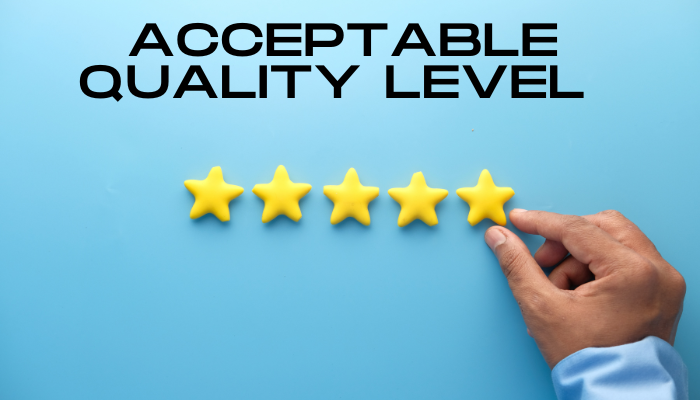Acceptable Quality Level (AQL) is a measure applied to products and defined in ISO 2859-1 as the “quality level that is the worst tolerable.” The AQL indicates how many defective components are considered acceptable during random sampling quality inspections.
It is usually expressed as a percentage or ratio between the number of defects and the total amount.
Here PND is explaining, Let us find out everything about it together.
KEY CONCEPTS
- The Acceptable Quality Level (AQL) is a product’s worst tolerable quality level.
- The AQL differs from product to product. Products that may pose a higher health risk will have a lower AQL.
- Product lots that do not meet the AQL, typically based on a percentage measurement, are rejected when checked during pre-shipment inspections.
How Acceptable Quality Level (AQL) works?
Products in a sample are randomly tested; if the number of defective items is less than a predetermined number, that product is said to meet the Acceptable Quality Level (AQL). Suppose the Acceptable Quality Level (AQL) is not met for a given sample of goods.
In that case, manufacturers will review the various parameters of the production process to determine the areas causing the defects.
IMPORTANT!
The AQL of a product can vary from industry to industry; medical products, for example, have strict EQLs because defective products pose a health risk.
For example, let’s consider an AQL of 1% on a production run. This percentage means that no more than 1% of the lot can be defective. Only ten products can be defective if a production run comprises 1,000 products. If 11 products are defective, the entire lot is scrapped. This figure of 11 or more defective products is known as the rejectable quality level (AQL).
AQL is an important statistic for companies seeking a Six Sigma quality control level. A quality control methodology developed in 1986 by Motorola, Inc. AQL is also known as the acceptable quality limit.
Special Considerations
The AQL of a product may vary from one sector to another. For example, medical products are more likely to have a stricter EQL because defective products can cause health risks.
In contrast, a product with mild side effects stemming from a possible defect may have a less stringent EQL such as a television remote control.
Companies must weigh the added cost of stringent testing and possible further deterioration due to lower defect acceptance against the potential cost of a product recall.
Of course, customers would prefer products or services with zero defects, the ideal acceptable quality level. However, vendors and customers often try to arrive at and set acceptable quality limits based on business, financial, and security factors.
NCA Defects
Cases of non-compliance with customer quality requirements are called defects. In practice, there are three categories of defects:
- Critical Flaws: Flaws that, if accepted, may harm users. These defects are unacceptable. Critical defects are defined as 0% AQL.
- Major Defects: Defects that are generally not acceptable to end-users as they are likely to cause failures. The AQL for major defects is 2.5%.
- Minor Defects: Defects that are not likely to substantially reduce the product’s usefulness for its intended purpose but differ from specified standards; some end users will continue to buy those products. The AQL for minor defects is 4%.1
The NCA in Practice
Acceptable Quality Level (AQL): The AQL is often considered the worst quality level that is still considered satisfactory. It is the maximum percentage of defects that can be considered satisfactory. The probability of accepting a lot with NCA must be high. A probability of 0.95 translates to a risk of 0.05.
Rejectable Quality Level (NCR): This is considered an unsatisfactory quality level and is sometimes referred to as Lot Defective Tolerance Percentage (LTPD). The consumer’s risk has been standardized in some tables as 0.1. The probability of accepting an RQL lot is low.
Indifference Quality Level (NCI): This quality level falls between the AQL and the NCR. Different companies hold different interpretations of each type of defect.
However, buyers and sellers agree on an EQL standard that is appropriate for each party’s level of risk. These standards are used as a reference during the pre-shipment inspection.
The AQL is also used to distinguish between “good” and “acceptable” quality levels.
Hopefully, you have got idea about Acceptable Quality Level and other aspects.
